Hachimantai is located at the foot of Mt. Iwate, smack center of the northern Tohoku Region. The area has all the elements of a solid winter destination—vast ski resorts, an expansive volcanic mountain range, natural hot springs and, as avid skiers would know, deep, fine powder. The consistent, high-quality snow is a result of seasonal winter winds carrying thick moisture east from the Sea of Japan, causing snow clouds to form. These snow clouds make their way over Tohoku’s Ou Mountain Range until they arrive in Iwate Prefecture’s Hachimantai area where the resorts are blessed with some of Honshu’s finest powder. Locals boast the powder near the mountain peaks is so fine that it’s impossible to form snowballs.
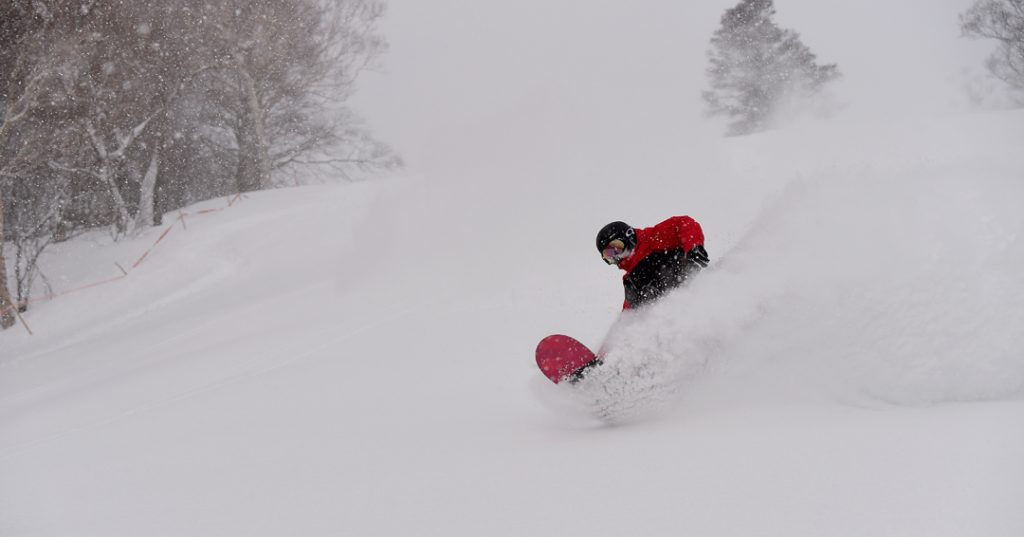
The rich and prosperous history also helped mold Hachimantai into what it is today. Skiing was first introduced here in 1918 making it one of the birthplaces of skiing in Japan. At that time, Hachimantai was home to the prosperous Matsuo Mine, said to be the best sulfur mine in the east. The mine’s community of around 15,000 people formed a ski club, practicing at the mine’s private resort. They eventually became one of Japan’s strongest teams.
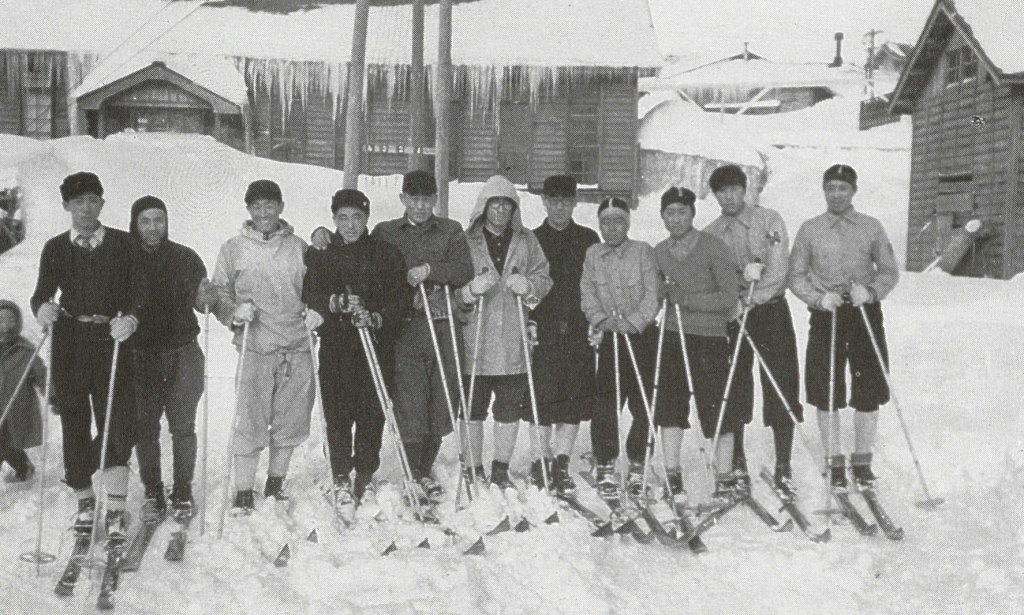
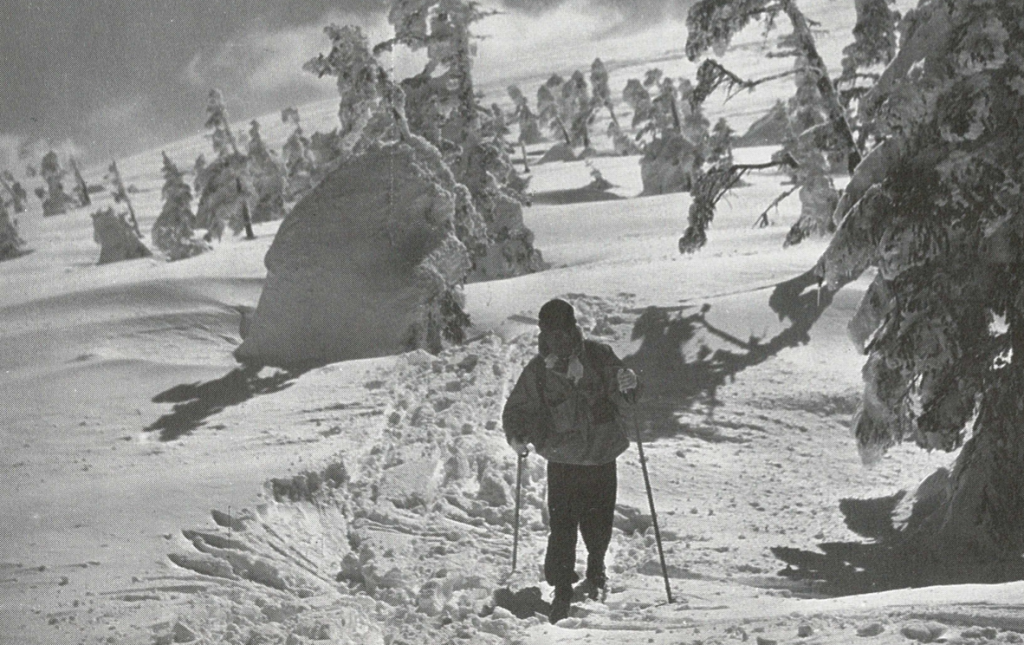
During the ’50s, the mine began to decline as there was less demand for sulfur. Yet they saw opportunity in domestic tourism as a massive ski boom was just taking off while a tired and war-torn Japan slowly recovered. They opened Ryugamori Ski Resort, a commercial resort that attracted skiers from all over Japan—even the U.S. military.
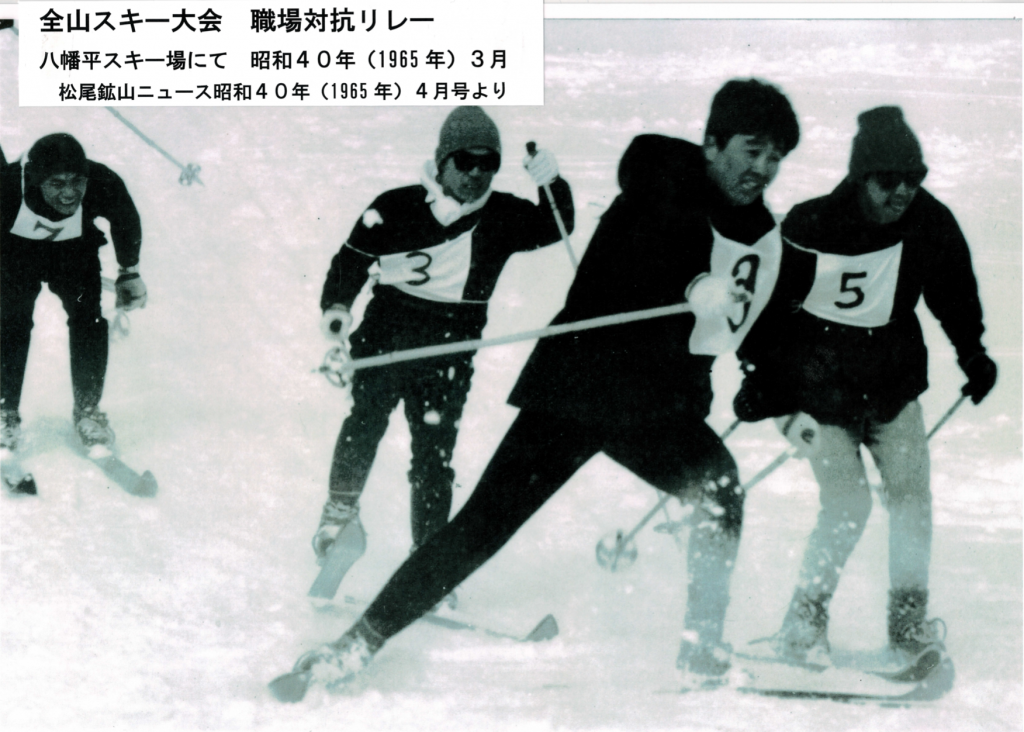
Expanding from mining sulfur to enjoying its byproduct, the company also drilled into Matsukawa Onsen, which released hot springs as well as steam. A few years later in 1966, Japan’s first geothermal power plant was built here. This not only met the needs for a stable supply of electricity, but also produced clean energy using natural steam that is still used today. Hachimantai continues to embrace the sustainable lifestyle, utilizing geothermal energy for power, farming, agriculture and production.
While the mine closed in 1969, Higashi Hachimantai Onsen opened shortly after, branding the region as a famous onsen and skiing destination. This region continued to flourish especially during Japan’s bubble economy.
Today, Hachimantai continues to welcome growth and exciting international development. This season alone, three massive hotels under IHG Hotels & Resorts group have opened and are all located on one site boasting 18 restaurants and bars, meeting and conference spaces, several retail outlets, and ten health and recreation venues including a 2,000-square-meter onsen facility.
Additionally in August 2022, the prestigious Harrow School from the U.K. is scheduled to open its first school in Japan.
Highlights
Appi Kogen Ski Resort
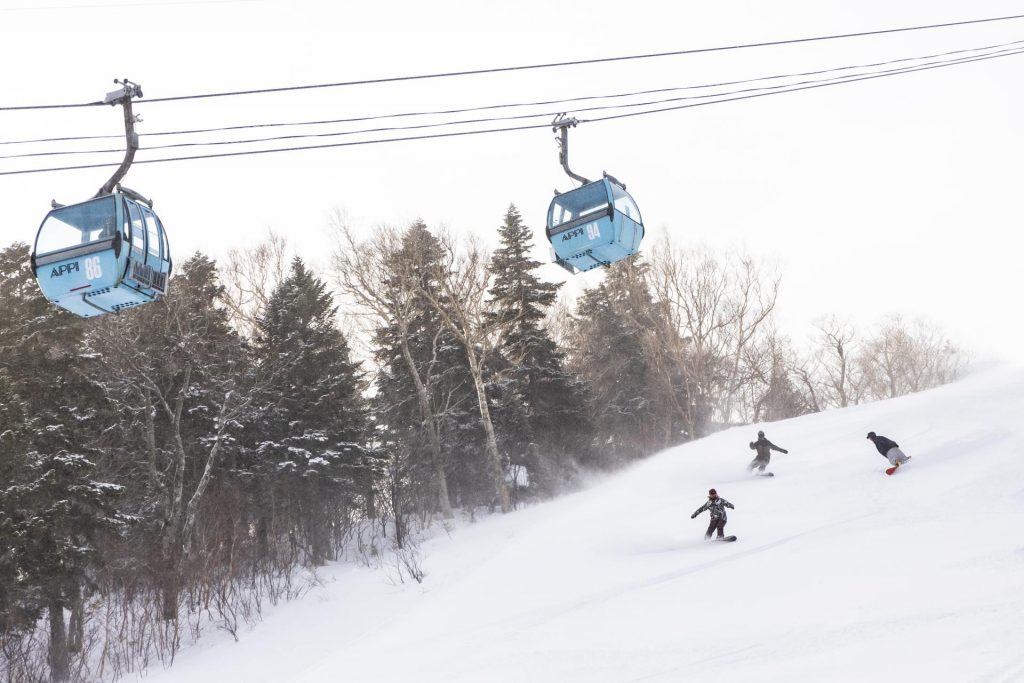
As Tohoku’s biggest ski resort, Appi has 21 slopes and 828 meters of vertical on Mt. Mamori and Mt. Nishimori. The resort faces north, which is great for snowfall but makes it susceptible to strong winds. Most of the runs are longer than two kilometers, the longest over five kilometers.
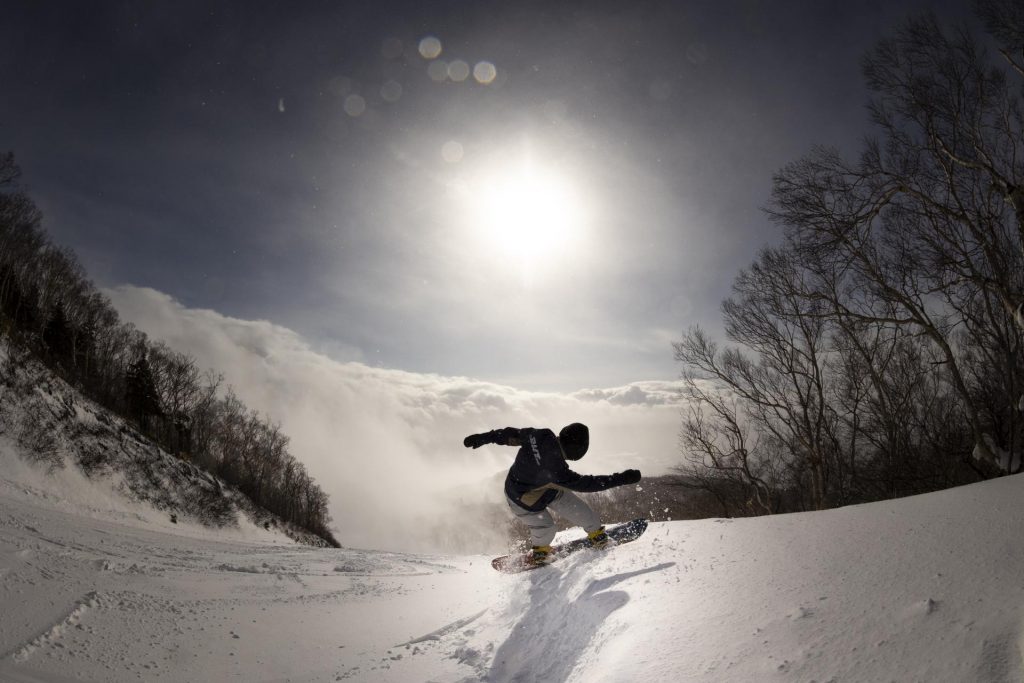
While grooming is a popular feature of the resort, there are also ungroomed runs made for powder riding and designated tree skiing areas—in particular the Yamagara and Inuwashi runs on Mt. Nishimori. There’s also the Tree Run Zone across the Nishimori and Sailer slopes covering 60 hectares. Before heading to the Tree Run Zone, be sure to sign a safety form at the first floor of the Appi Plaza building.
Check the course map here for Tree Run Zones.
Backcountry tours are also available through Appi Kogen Backcountry Tours. There are half-day and full day tours ranging from ¥6,500 to ¥16,000.
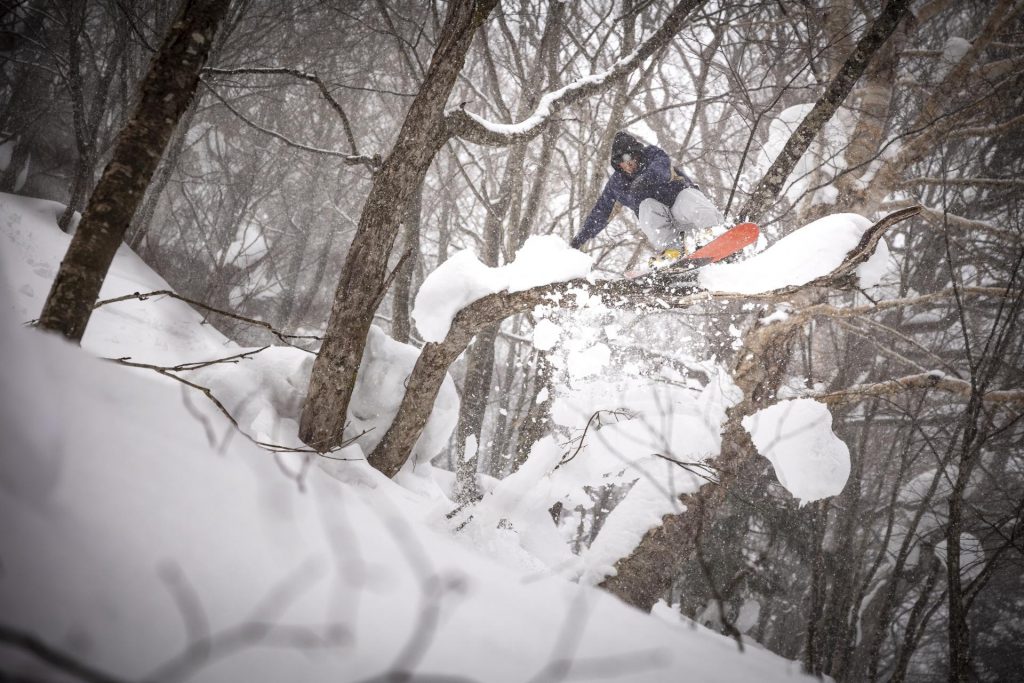
The massive ANA Crowne Plaza Resort Appi Kogen at the base makes it an easy, but pricey, ski-in ski-out destination for families and eager riders. Located next door, Shirakaba-no-Yu is a natural hot spring with an impressive rotenburo (outdoor bath) area. It is open to both guests and day trippers. There is also an affordable variety of accommodation further down at the Appi pension village. As the area is mainly made up of hotels and pensions, you’ll have to plan ahead for dining options.
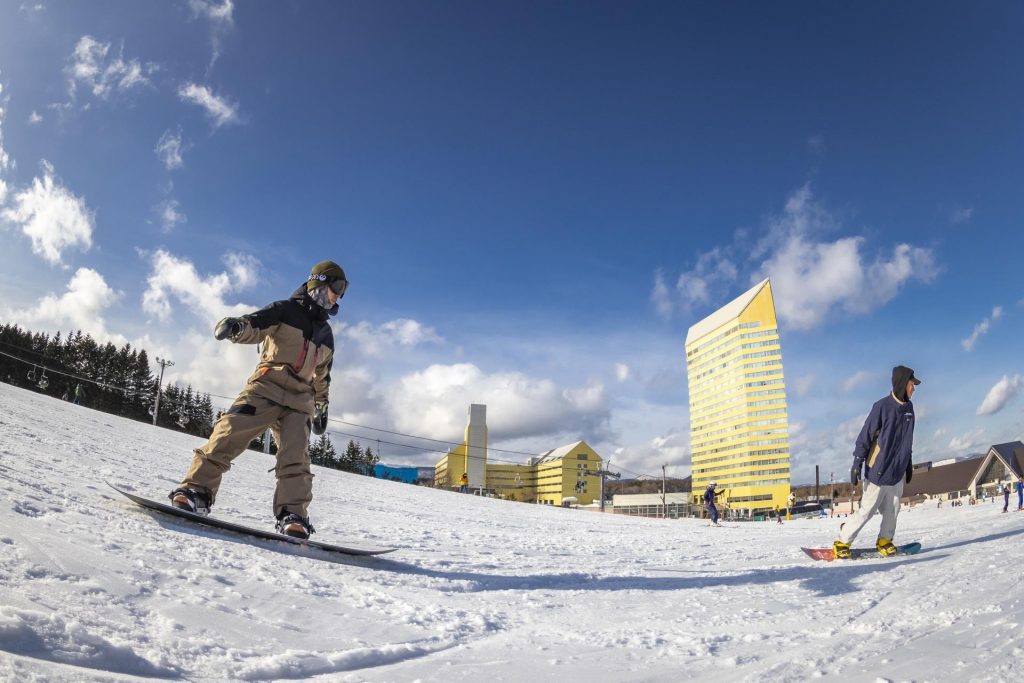
Hachimantai Resort
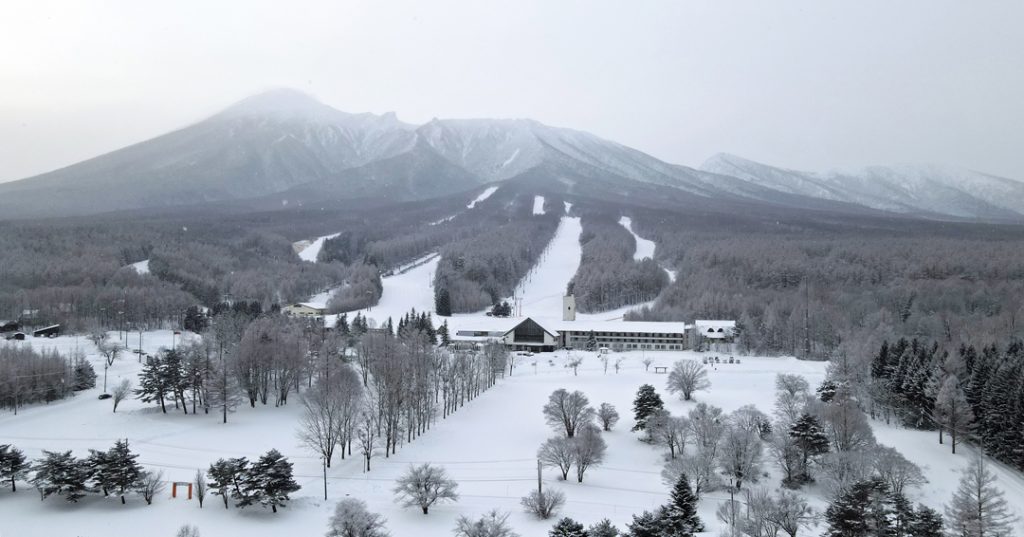
This resort is made up of two areas, Panorama Ski Resort and Shimokura Ski Resort. Panorama is geared towards beginners and intermediate riders. For those wanting to experience other types of snow activities, Hachimantai Winterland offers snow rafting, snow tubing, mini snowmobiles, banana boat riding, sledding and snowshoe hiking. Skids Camp is a ski and snowboard school for kids.
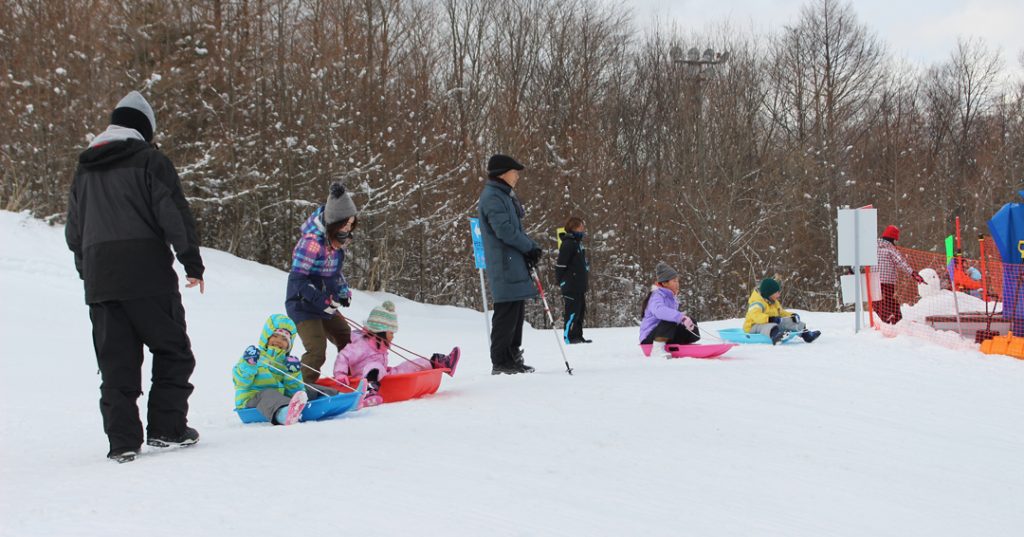
Shimokura is geared towards experts. The lifts face east, so it doesn’t get hit by strong storms and heavy winds that may shut down some lifts at Appi. The resort’s Diamond course is known for its 37-degree gradient called the “Wall of Shimokura.” Riders can also go snowcat skiing with Hachimantai Cat Skiing. There are only six marked courses here and while the advanced-level terrain is small compared to other resorts, its uncrowded tree runs are worth it.
Check the course map here for Tree Run Zones.
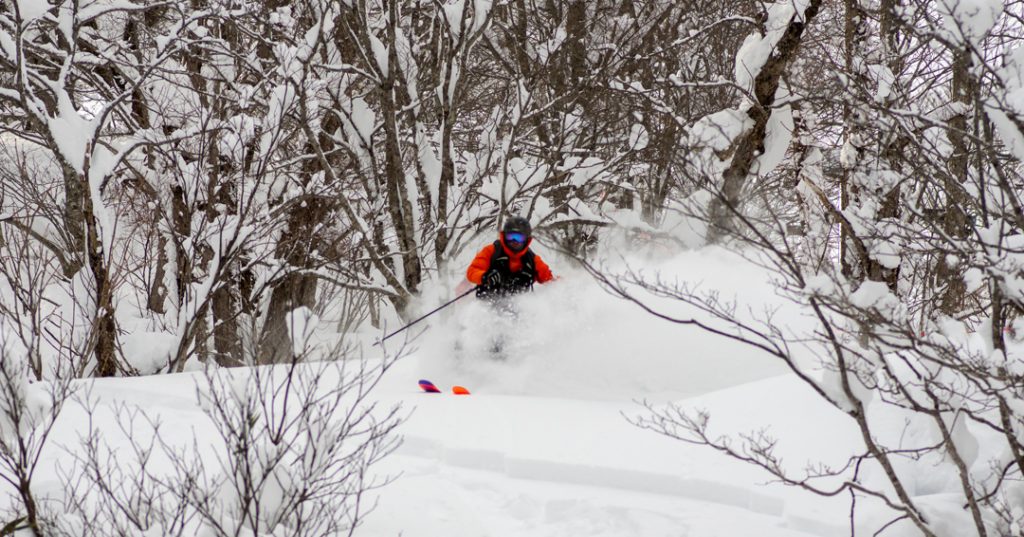
The two resorts are not connected via slopes but are linked by a free shuttle bus that takes 10 minutes. You can use the same lift pass at both resorts.
Hachimantai Aspite Line
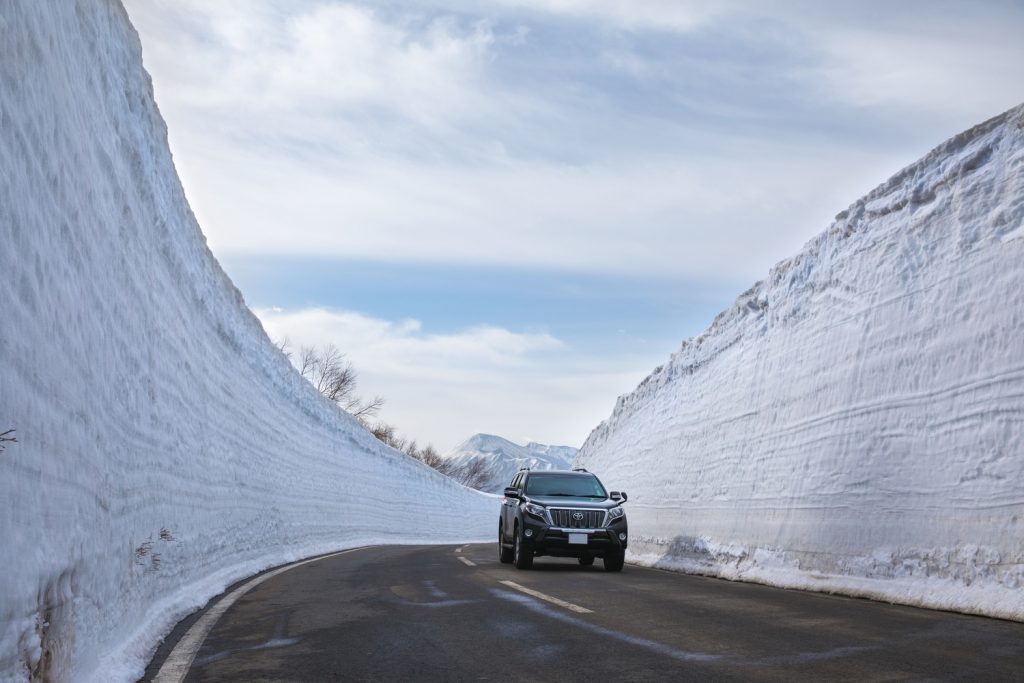
Grab your camera for this one. During the green season, Hachimantai is known for its high-altitude, scenic roads. While many are snowed in during winter, they reopen at the start of spring in late April surrounded by massive walls of snow. The imposing Hachimantai Aspite Line runs through Iwate and Akita prefectures. Its snow walls reach up to a staggering six meters in height, and the path is 27 kilometers long, the longest in Japan. Once you reach the base of Hachimantai, you’ll be greeted with groves of sakura trees in full bloom.
Hachimantai Dragon Eye
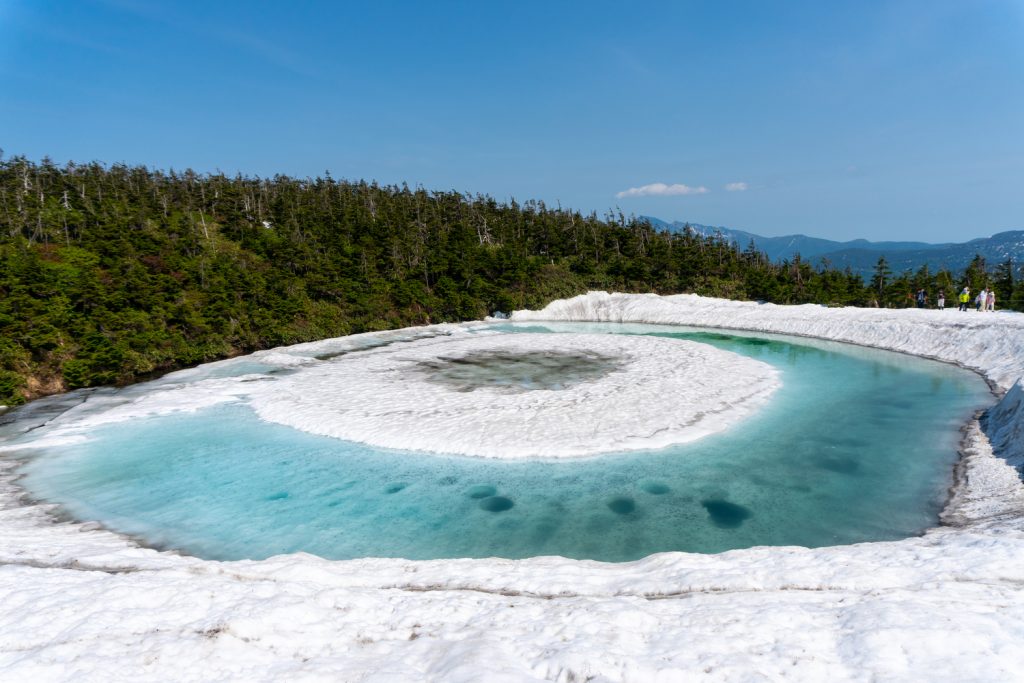
Another limited-time-only activity is this unique phenomenon located on Kagami Pond, a crater lake. Every year in late May to early June, the ice formed over the pond melts slowly forming a floating, circular sheet of ice. This makes the pond look like a dragon’s eye, hence its name. The pond is near Mt. Hachimantai’s summit and is about a 20-minute hike on the mountain trail from the rest house parking lot. Trekkers must walk on some remaining snow so wear appropriate footwear.
Nanataki Falls
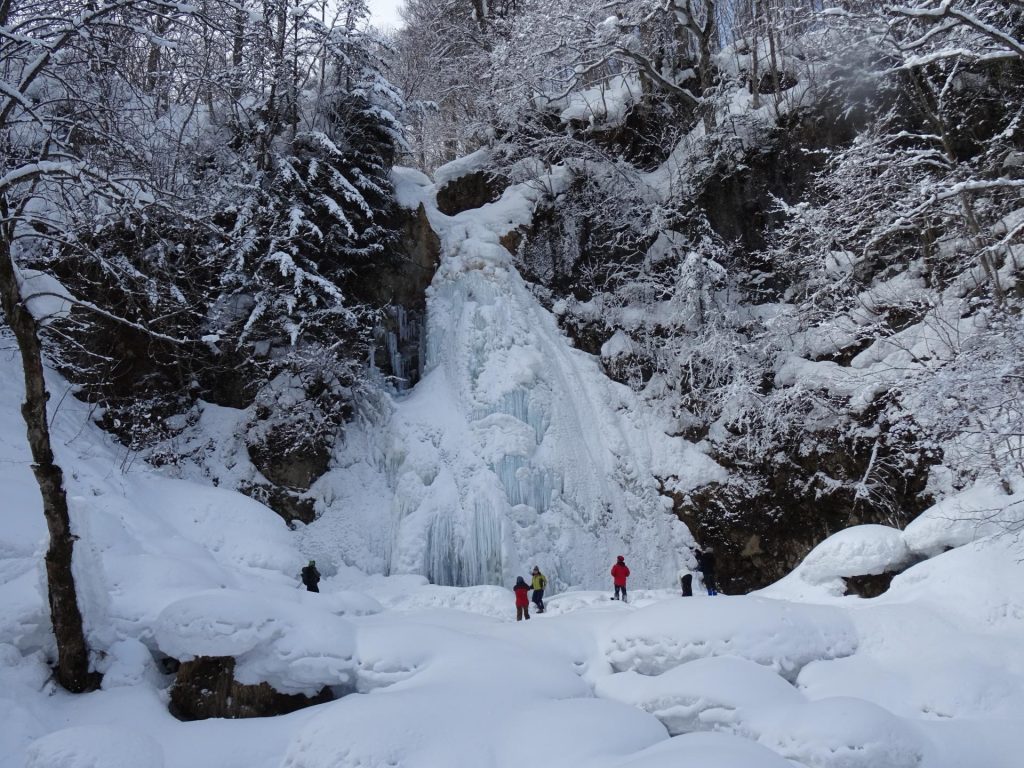
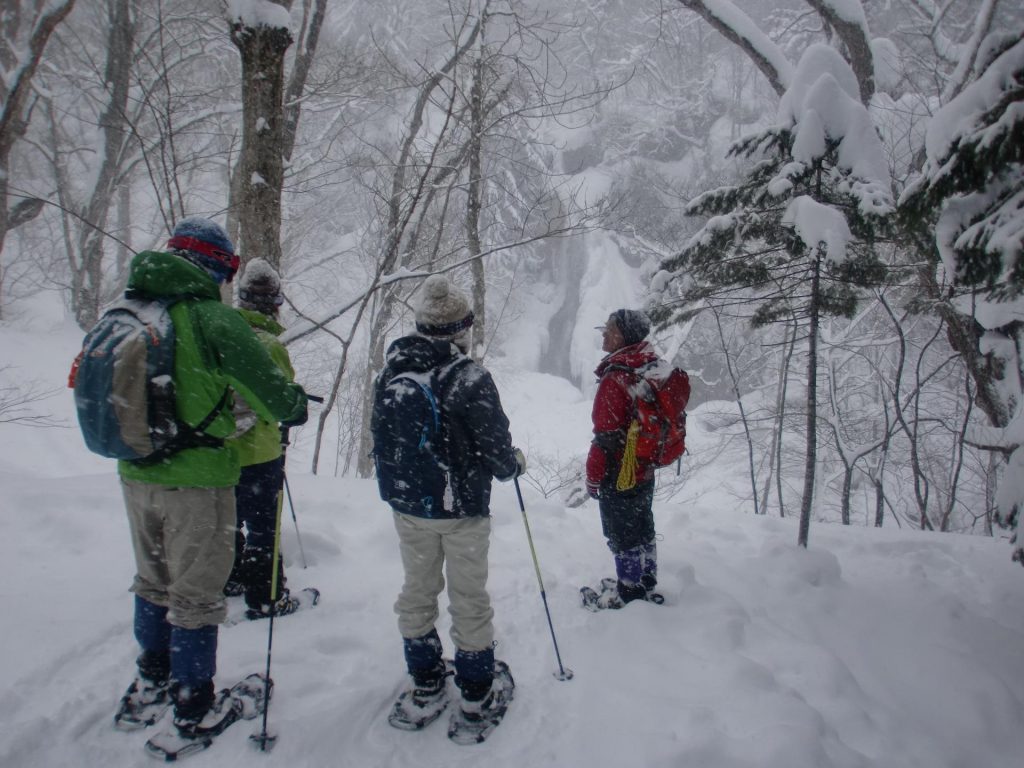
Snowshoe along the Nanataki route on Mt. Iwate to see the mystical, frozen 25-meter waterfall. The seven-tiered waterfall has a drop of 60 meters and is one of the “100 famous waterfalls of Japan.” It takes a little over three hours round trip and is a recommended trail for beginners. The waterfall is frozen from late January to February.
Matsukawa Onsen

Tohoku’s mountains in winter can drop to -30 degrees Celsius with windchill, so you’ll need to stay warm and recover after a day on the slopes. Matsukawaso is a traditional Japanese ryokan used for generations as a place to recover from injuries and sickness.
The geothermal waters from this sulfur spring are milky white. The open-air rotenburo bath overlooks the Matsukawa River, and you can even bring in little pitchers of sake and cups into the bath. Be warned however: it’s a mixed bath. Right next to the rotenburo is a place to make onsen tamago, eggs boiled in sulfurous hot springs water. Access to the baths for non-staying guests is ¥550.
Geothermal Dyeing Studio Alpine Rose
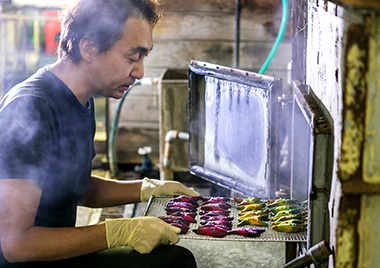
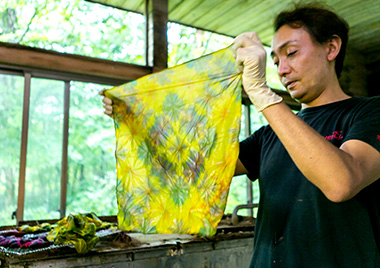
Not many people may want to visit a power plant on their vacation, but you might be interested in learning more about its history by trying geothermal dyeing. This studio, located near the power plant, is one of the few places in the world that uses geothermal steam in the process of fabric dyeing. The clean hydrogen sulfide is free of impurities and creates beautiful gradation in the colors. Visitors can try their hand at this unique form of dyeing and bring home a souvenir.
Getting There
The best way to get to Hachimantai is by taking the shinkansen (bullet train) to Morioka Station. If you’re coming from Tokyo, it takes two-and-a-half hours from Tokyo Station on the Tohoku-Hokkaido shinkansen line. The easiest way to get around the area is renting a car from Morioka Station. There are also buses to Hachimantai Resort (60 minutes), Matsukawa Onsen (120 minutes) and Appi Kogen (50 minutes), although these may take longer in winter.
For more information or to book experiences at Hachimantai, check out Visit Hachimantai.
